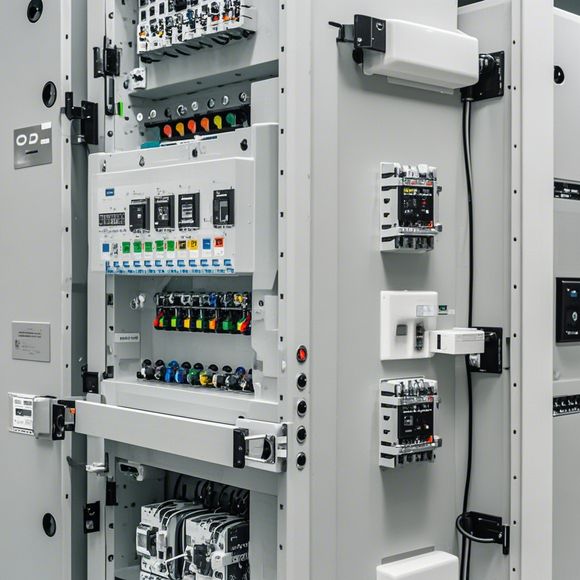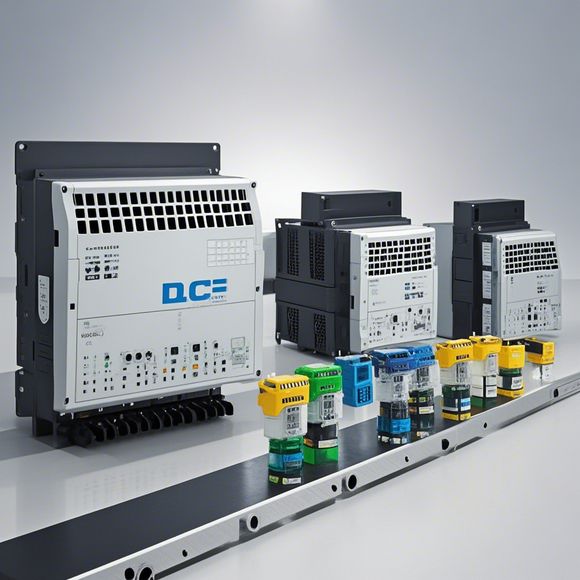PLC Operational Principles
PLC stands for Programmable Logic Controller, and it's essentially a digital computer system designed to automate industrial processes. Its operational principle is based on the use of logic functions, which are executed by a series of interconnected microprocessors. The PLC reads data from input devices (like switches or sensors) and then generates output signals that control the actuators in a process. These signals can be used to turn on or off motors, activate valves, or change the direction of a conveyor belt. The PLC continuously monitors these inputs and outputs, adjusting its actions based on changing conditions to ensure optimal performance. Overall, the PLC operates through a sequence of instructions that allow it to respond quickly and accurately to any changes in the environment or process.
In the realm of modern industrial automation, Programmable Logic Controllers (PLCs) stand as the cornerstone of digital control systems. These marvelous machines have revolutionized how industries process data and manage complex workflows. The working principles behind PLCs are intricate yet simple, making them an indispensable component for any industrial setup that requires precise and reliable automation. Let's dive into the world of PLCs and explore the core elements that make them so effective.
To understand the working of a PLC, let's start by defining what it is. A PLC is an electronic device that can execute instructions based on predefined rules or algorithms. It's like a miniature brain that controls various mechanical devices within an industrial environment. The beauty of PLCs lies in their ability to handle a wide range of inputs and outputs, making them ideal for applications where precision and efficiency are critical.

One of the most fascinating aspects of PLCs is their ability to be programmed using a variety of programming languages. This means that you don't need to be a professional engineer to create and modify the logic that controls your equipment. With the help of software tools, you can easily program your PLC with commands that tell it what to do, when to do it, and how to respond to different situations. This level of customization ensures that your PLC can work seamlessly with other devices in your system, creating a truly integrated and efficient solution.
Another crucial aspect of PLCs is their ability to communicate with other systems within an industrial setting. By integrating with sensors, switches, and other hardware components, PLCs enable the monitoring and control of various parameters within your facility. For example, a PLC can detect when a conveyor belt breaks down and automatically shut it off to prevent further damage. Or, if a machine part needs replacing, the PLC can coordinate with a robotic arm to pick up and install the new part without human intervention.
The power of PLCs extends beyond just controlling machinery; they also play a crucial role in maintaining safety and compliance with regulations. Many PLCs come equipped with features such as alarm systems, fault detection mechanisms, and emergency stop buttons. These features ensure that your production line operates smoothly and safely, even in the event of a malfunction or unexpected event. Additionally, many PLCs allow for easy integration with security systems, enabling you to monitor and control access to your facilities remotely.
One of the most significant advantages of PLCs is their flexibility. Unlike some traditional control systems, PLCs can be customized to suit your specific needs and preferences. Whether you need to control temperature, humidity, pressure, or any other parameter, PLCs can be tailored to meet those requirements. This adaptability makes PLCs an ideal choice for a wide range of applications, from small workshops to massive manufacturing facilities.
In addition to their technical capabilities, PLCs are also highly cost-effective. Compared to other types of control systems, PLCs offer significant savings in terms of installation, maintenance, and energy usage. This is because PLCs are designed to be highly efficient, requiring less power and generating fewer emissions during operation. Moreover, since they operate with minimal human input, there's often no need for extensive training or oversight. All these factors combine to make PLCs an attractive option for businesses seeking to reduce costs while maintaining high levels of performance.
When it comes to selecting a PLC, it's essential to consider several key factors. First and foremost, you should determine what kind of application you're looking for, such as temperature control, motion control, or process control. Each type of PLC has its unique features and capabilities that may be better suited for certain tasks. Additionally, you should consider the size of your facility and the amount of equipment you need to control. Larger installations may require more powerful and sophisticated PLCs than smaller ones. Finally, remember to research different brands and models to find the one that best fits your budget, performance requirements, and operational needs.
In conclusion, the PLC is an incredible piece of technology that has revolutionized the way we approach automation and control in the workplace. With its advanced programming capabilities, versatile communication options, and cost-effective nature, PLCs are the perfect solution for any industrial application. As you embark on your search for the ideal PLC, remember that the key to success lies in understanding your specific needs and carefully selecting the right tool for the job. With PLCs at your fingertips, you'll be able to achieve unparalleled levels of productivity, reliability, and efficiency in your operations.
Content expansion reading:
In the realm of foreign trade operations, Programmable Logic Controllers (PLCs) play a pivotal role. Understanding the working principles of PLCs is essential for any professional involved in this field.
PLCs are essentially digital computers designed to handle automated tasks in industrial environments. They monitor and control machines, processes, and systems by receiving input signals from various sensors and switches, and then processing these signals according to pre-programmed instructions. The PLC's output is then sent to control devices like motors, valves, or other machinery components, ensuring accurate and efficient operation.

The working principles of PLCs can be summarized in a few key steps:
1、Input Processing: PLC receives input signals from sensors or other devices that monitor the status of machines or processes. These signals are then processed to determine the current state of the system.
2、Program Execution: Based on the input signals, PLC executes the pre-programmed instructions stored in its memory. These instructions determine the logic operations to be performed and the sequence of operations to be executed.
3、Output Control: After processing the input signals and executing the program, PLC generates output signals that control the connected devices or machines. These output signals ensure smooth and accurate operation of the systems.
4、Communication: PLCs also have the ability to communicate with other devices or computers, allowing for data exchange and remote monitoring of systems. This communication capability makes PLCs an integral part of modern industrial automation systems.
In foreign trade operations, PLCs are used extensively for automation and control of various processes. For instance, they are used in manufacturing plants to monitor and control production lines, ensuring efficient operation and product quality. PLCs also play a crucial role in logistics and warehousing, helping to automate inventory management and tracking systems. Additionally, they are used in port operations, shipping, and customs clearance, ensuring smooth flow of goods and compliance with regulatory requirements.
Understanding the working principles of PLCs is not only important for technical professionals but also for those involved in management and decision-making in foreign trade operations. It helps them make informed decisions about automation systems, choose the right PLC for specific applications, and integrate PLCs effectively into their operations.
Moreover, with the advent of advanced technologies like Industrial Internet of Things (IIoT), PLCs are becoming more interconnected and intelligent, enabling real-time data collection and analysis. This allows for better monitoring and optimization of foreign trade operations, leading to improved efficiency, productivity, and profitability.
In conclusion, PLCs are indispensable in foreign trade operations, and understanding their working principles is crucial for success in this field. By mastering the fundamentals of PLCs and staying updated with the latest technologies, professionals in foreign trade can ensure smooth and efficient operations, leading to overall business success.
Articles related to the knowledge points of this article:
Mastering the Art of Plc Controllers: A Comprehensive Guide to Understand and Implement
PLC (Programmable Logic Controller) Control System Basics
Plumbers Rule! The Role of PLC Controllers in the World of Waterworks
Connecting a PLC Controller to Your Computer
Effective Strategies for Handling PLC Control System Faults
PLC Controller Advantages: A Comprehensive Guide for Success in Global Trade